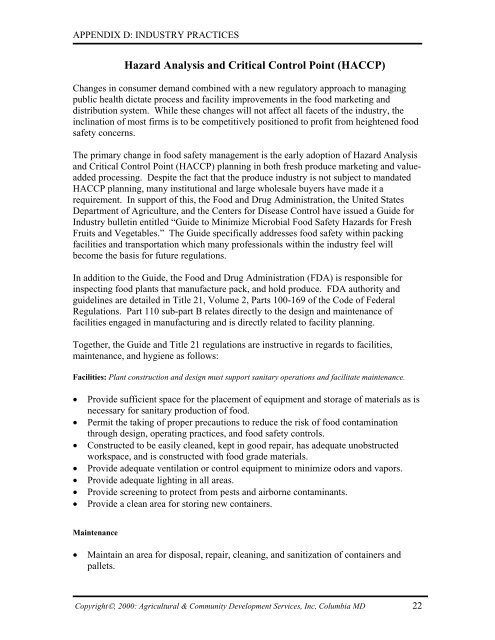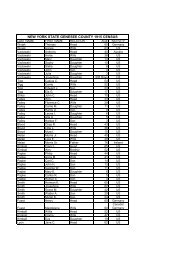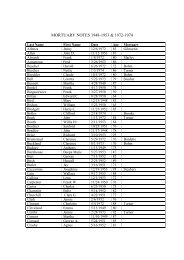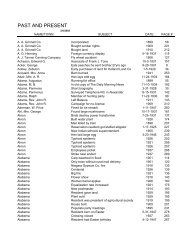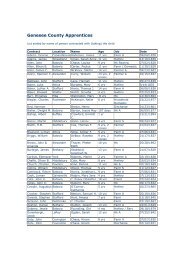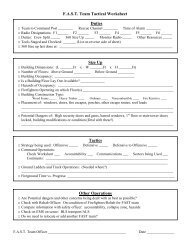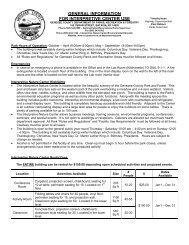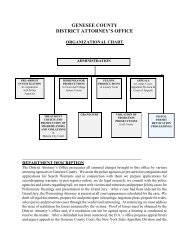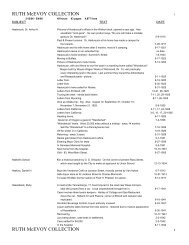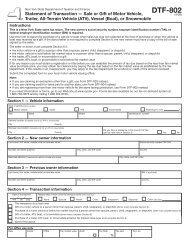Genesee County Agricultural and Farmland Protection Plan
Genesee County Agricultural and Farmland Protection Plan
Genesee County Agricultural and Farmland Protection Plan
You also want an ePaper? Increase the reach of your titles
YUMPU automatically turns print PDFs into web optimized ePapers that Google loves.
APPENDIX D: INDUSTRY PRACTICES<br />
Hazard Analysis <strong>and</strong> Critical Control Point (HACCP)<br />
Changes in consumer dem<strong>and</strong> combined with a new regulatory approach to managing<br />
public health dictate process <strong>and</strong> facility improvements in the food marketing <strong>and</strong><br />
distribution system. While these changes will not affect all facets of the industry, the<br />
inclination of most firms is to be competitively positioned to profit from heightened food<br />
safety concerns.<br />
The primary change in food safety management is the early adoption of Hazard Analysis<br />
<strong>and</strong> Critical Control Point (HACCP) planning in both fresh produce marketing <strong>and</strong> valueadded<br />
processing. Despite the fact that the produce industry is not subject to m<strong>and</strong>ated<br />
HACCP planning, many institutional <strong>and</strong> large wholesale buyers have made it a<br />
requirement. In support of this, the Food <strong>and</strong> Drug Administration, the United States<br />
Department of Agriculture, <strong>and</strong> the Centers for Disease Control have issued a Guide for<br />
Industry bulletin entitled “Guide to Minimize Microbial Food Safety Hazards for Fresh<br />
Fruits <strong>and</strong> Vegetables.” The Guide specifically addresses food safety within packing<br />
facilities <strong>and</strong> transportation which many professionals within the industry feel will<br />
become the basis for future regulations.<br />
In addition to the Guide, the Food <strong>and</strong> Drug Administration (FDA) is responsible for<br />
inspecting food plants that manufacture pack, <strong>and</strong> hold produce. FDA authority <strong>and</strong><br />
guidelines are detailed in Title 21, Volume 2, Parts 100-169 of the Code of Federal<br />
Regulations. Part 110 sub-part B relates directly to the design <strong>and</strong> maintenance of<br />
facilities engaged in manufacturing <strong>and</strong> is directly related to facility planning.<br />
Together, the Guide <strong>and</strong> Title 21 regulations are instructive in regards to facilities,<br />
maintenance, <strong>and</strong> hygiene as follows:<br />
Facilities: <strong>Plan</strong>t construction <strong>and</strong> design must support sanitary operations <strong>and</strong> facilitate maintenance.<br />
• Provide sufficient space for the placement of equipment <strong>and</strong> storage of materials as is<br />
necessary for sanitary production of food.<br />
• Permit the taking of proper precautions to reduce the risk of food contamination<br />
through design, operating practices, <strong>and</strong> food safety controls.<br />
• Constructed to be easily cleaned, kept in good repair, has adequate unobstructed<br />
workspace, <strong>and</strong> is constructed with food grade materials.<br />
• Provide adequate ventilation or control equipment to minimize odors <strong>and</strong> vapors.<br />
• Provide adequate lighting in all areas.<br />
• Provide screening to protect from pests <strong>and</strong> airborne contaminants.<br />
• Provide a clean area for storing new containers.<br />
Maintenance<br />
• Maintain an area for disposal, repair, cleaning, <strong>and</strong> sanitization of containers <strong>and</strong><br />
pallets.<br />
Copyright©, 2000: <strong>Agricultural</strong> & Community Development Services, Inc, Columbia MD 22


